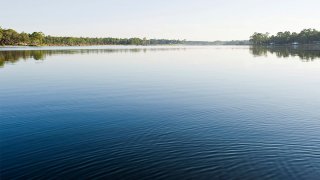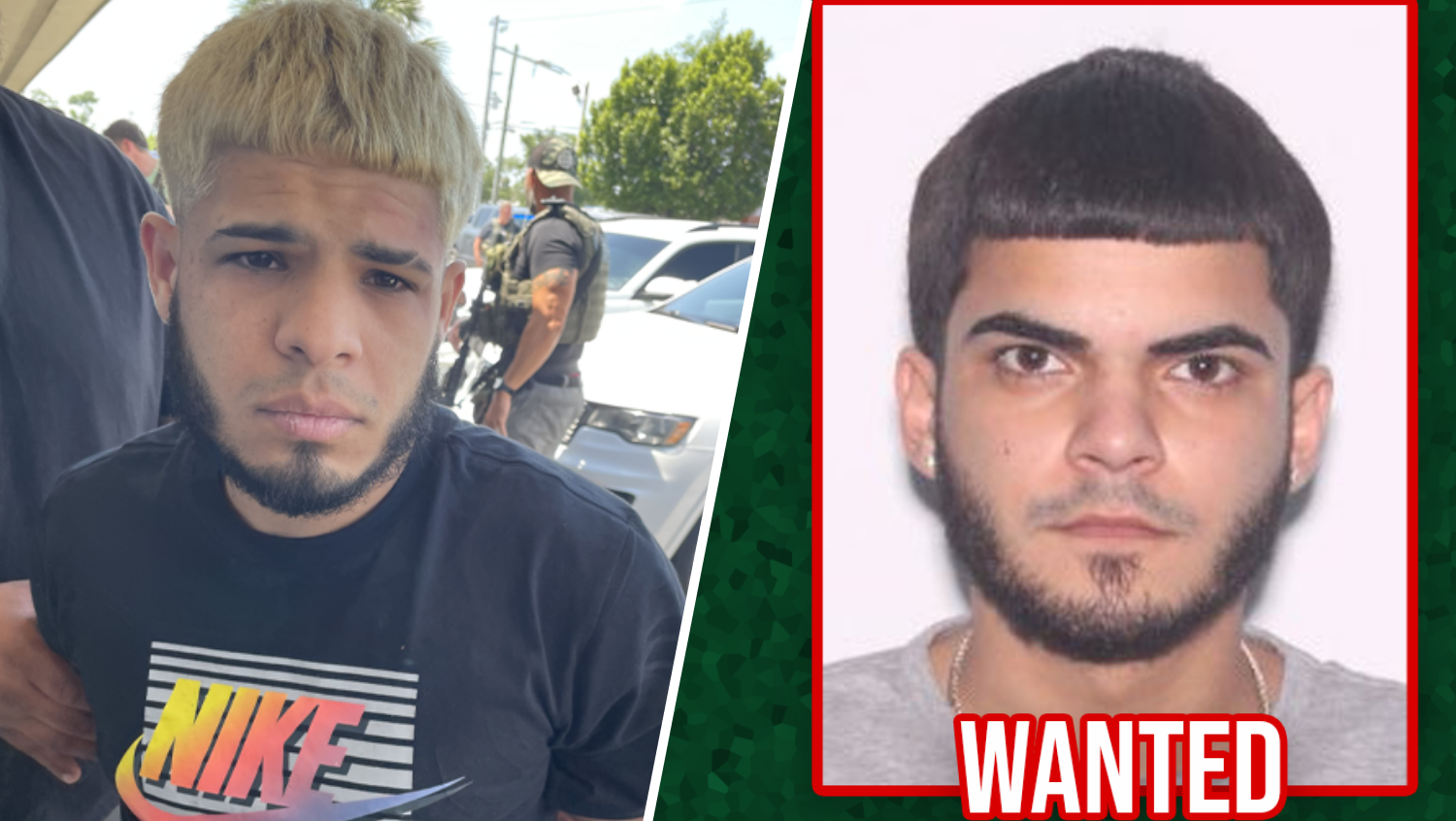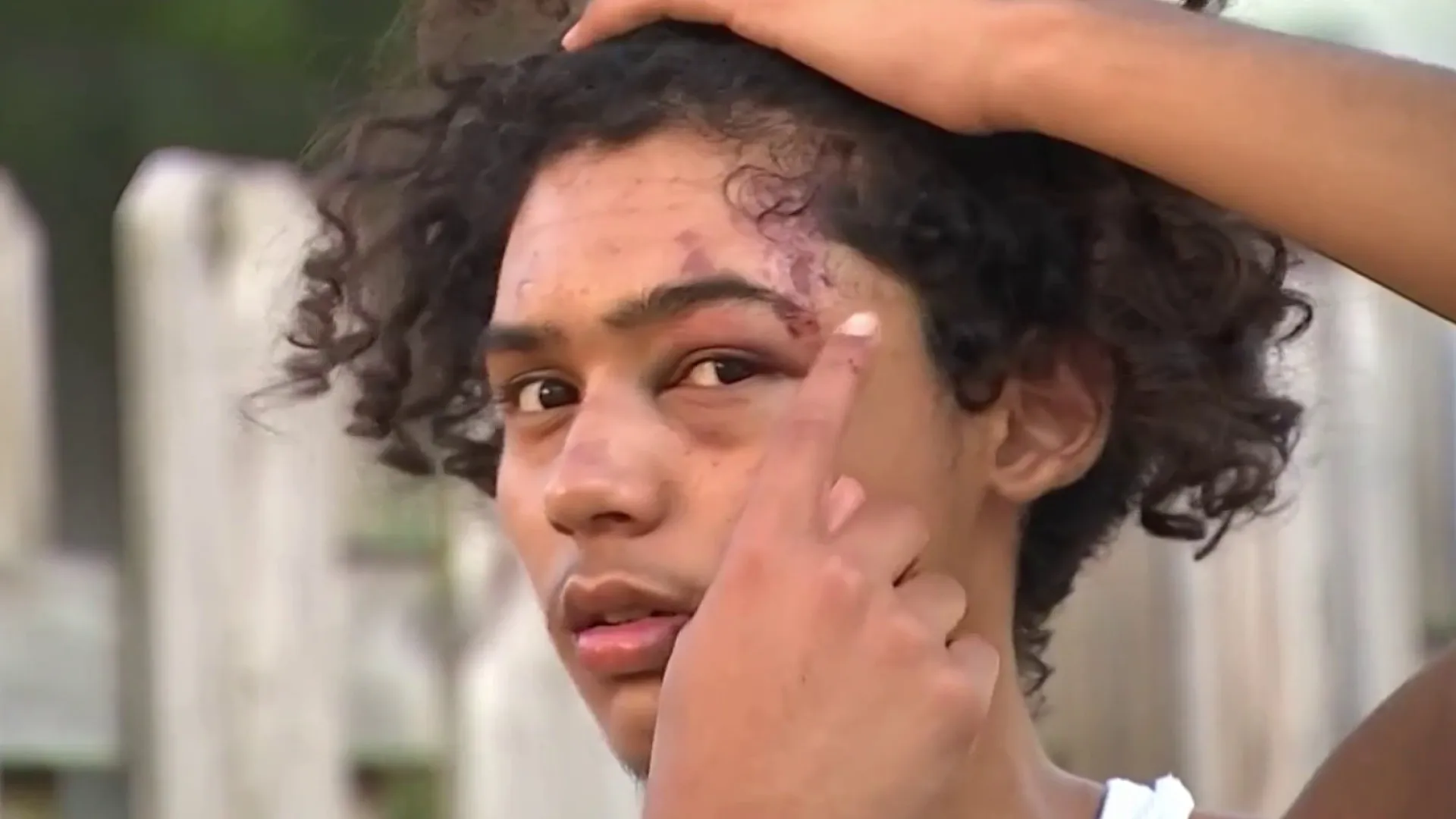
Archaeologists will soon start the search for Keystone Memorial Cemetery, believed to have been forgotten 70 years ago among the 130 acres that today make up Bay Tree Farm.
But remnants of the all-black burial ground may already have been found recently — by the Hillsborough County Sheriff’s Office dive team.
Over the course of six hours, members of the team pulled three possible markers and pieces of three others from Lake Twitt in Odessa, near where the cemetery was established.
Shown photos of the square and rectangular concrete blocks, 91-year-old Curtiss Wilson, who grew up near the cemetery and now lives in East Tampa, said she remembers objects just like them from the cemetery.
Get South Florida local news, weather forecasts and entertainment stories to your inbox. Sign up for NBC South Florida newsletters.
“They are cornerstones," said Wilson, whose father Charlie Walker tended to the cemetery. “Those who could afford them put one in each corner of the grave."
Wilson, the retired founder of Wilson Funeral Home, was certain that a long rectangular block was a cornerstone. Square blocks and pieces of concrete look like markers that would have been used but she could not be certain.
But divers shouldn’t have expected to find traditional headstones, Wilson said. Families who buried loved ones at Keystone cemetery couldn’t afford them and made do with what they had.
Local
“Usually just those bricks of concrete,” Wilson said. “There were maybe a few permanent headstones." Wilson was upset to see her fears confirmed — that someone would toss markers into the lake and perhaps leave the bodies in the ground as though they meant nothing.
“How can anyone do anything like that?" she said. "What type of person?”
Bay Tree Farm owner Carolyn Wilson, who is no relation to Curtiss Wilson, was not surprised to see divers emerge with the markers. She operates the farm for a dozen or so horses that have been put out to pasture there.
“I expected this,” said Carolyn Wilson, a developer and namesake of an art gallery at the University of South Florida.
She purchased the property at 9201 Gunn Hwy. in 1981 and later heard there might have been a burial ground somewhere on the property. She also heard that college fraternities used to send pledges to the lake at night in search of grave markers.
Upon learning from the Tampa Bay Times about interest in Keystone cemetery from descendants of those buried there, Carolyn Wilson reached out to USF for help.
The search for graves will be led by USF archaeologist Erin Kimmerle, who has gained attention for work including the discovery of graves at the Arthur G. Dozier School for Boys — a state-run reform school in Marianna that was shuttered in 2011.
The Keystone cemetery search will be conducted with ground penetrating radar. Kimmerle has not yet announced when it will start. First, she needs to better pinpoint where the cemetery might have been.
Brian Boyle of Odessa, a history hobbyist, put Carolyn Wilson in contact with friends of his on the sheriff’s dive team.
The team is required to perform two training dives a month in bodies of water throughout Hillsborough County. January’s dive was conducted at Lake Twitt, owned by Carolyn Wilson, with the understanding that the team would also look for remnants of the forgotten cemetery.
This dive enabled them to practice techniques employed for searching for evidence.
They didn’t have to search long.
Within 15 minutes after entering the water, while standing in waist-deep water and shuffling their feet on the lake bottom, divers found two markers next to a crumbling wooden dock. The third was found the next day.
It appears someone tossed the markers from the dock, said Scott Jones, the master deputy who leads the dive team.
Still, the three intact corner markers hardly seemed the type of find that warranted the body of water’s former reputation among fraternities. They called it “Suicide Lake.”
But dive team member deputy Andrew Lynch said the sea grass was nearly five feet high in some areas and their feet sunk six to seven inches into the earth in others. So, other markers could have been too well hidden to locate.
They also limited their search to 10 feet around the dock located in the lake’s western area and near a clearing in the eastern portion. The markers were found near the dock.
The dive team is willing to return at a later date for another training exercise in a different area of the lake.
Archaeologist Kimmerle agreed the slabs of concrete resemble corner markers, but said it is also a possibility they were used for something else, though she could not say for what.
“We need to put together a land use record of the property to find out," she said.
Such research, Kimmerle said, might also explain why the dive team recovered a handful of brick street pavers created by the Georgia-based Rockmary company that closed shop in 1929.
“This land has a long history,” Kimmerle said. “We need to learn more.”
The Keystone cemetery was founded in the early 1900s by freed slave Tony Lewis.
The next owner was David Allen — like Lewis, a member of nearby Mt. Pleasant AME Church. In 1924, Allen sold the property that included the cemetery to William Twitt, the county tax assessor and lake’s namesake.
In 1941, Twitt sold the land to Ernestine Woodard. She would later partner in the property with her brother Robert Woodard Sr., later the mayor of Temple Terrace.
Curtiss Wilson said Twitt allowed the church and community to continue using the land as a cemetery. The owners who followed, she said, put a stop to it.
Those with family buried at the cemetery could not afford to move the bodies, she said, and at some point in the 1950s the markers disappeared.
Curtiss Wilson believes as many as 75 bodies are still there.
“If they keep looking,” she said, “they’ll find more than the corner markers.”



